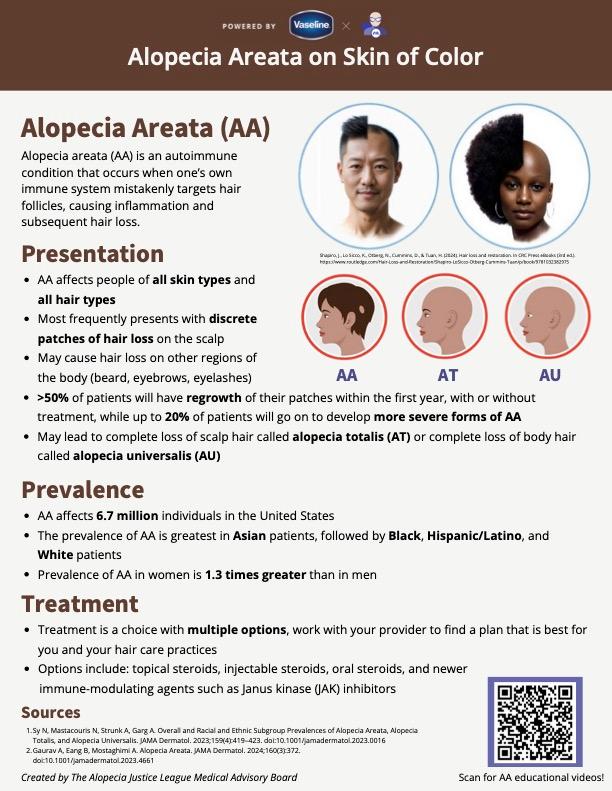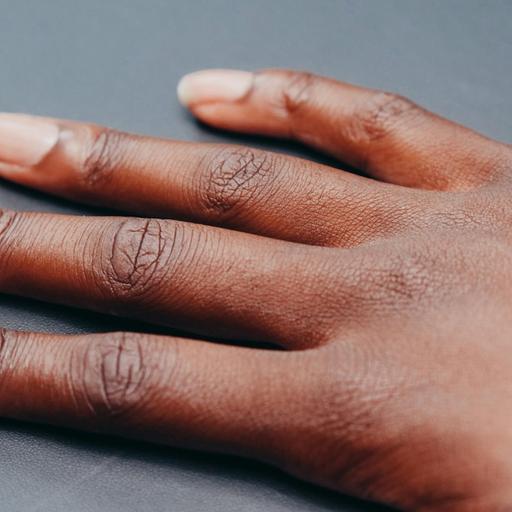Alopecia Areata on Skin of Color
By
The Alopecia Justice League Medical Advisory Board

Alopecia areata (AA) is an autoimmune condition that occurs when one’s own immune system mistakenly targets hair follicles, causing inflammation and subsequent hair loss.
Presentation
- AA affects people of all skin types and all hair types
- Most frequently presents with discrete patches of hair loss on the scalp
- May cause hair loss on other regions of the body (beard, eyebrows, eyelashes)
- 50%+ of patients will have regrowth of their patches within the first year, with or without treatment, while up to 20% of patients will go on to develop more severe forms of AA
- May lead to complete loss of scalp hair called alopecia totalis (AT) or complete loss of body hair called alopecia universalis (AU)
Prevalence
- AA affects 6.7 million individuals in the United States
- The prevalence of AA is greatest in Asian patients, followed by Black, Hispanic/Latino, and White patients
- Prevalence of AA in women is 1.3 times greater than in men
Treatment
- Treatment is a choice with multiple options, work with your provider to find a plan that is best for you and your hair care practices *Options include: topical steroids, injectable steroids, oral steroids, and newer immune-modulating agents such as Janus kinase (JAK) inhibitors
Sources
- Sy N, Mastacouris N, Strunk A, Garg A. Overall and Racial and Ethnic Subgroup Prevalences of Alopecia Areata, Alopecia Totalis, and Alopecia Universalis. JAMA Dermatol. 2023;159(4):419–423. doi:10.1001/jamadermatol.2023.0016
- Gaurav A, Eang B, Mostaghimi A. Alopecia Areata. JAMA Dermatol. 2024;160(3):372. doi:10.1001/jamadermatol.2023.4661



